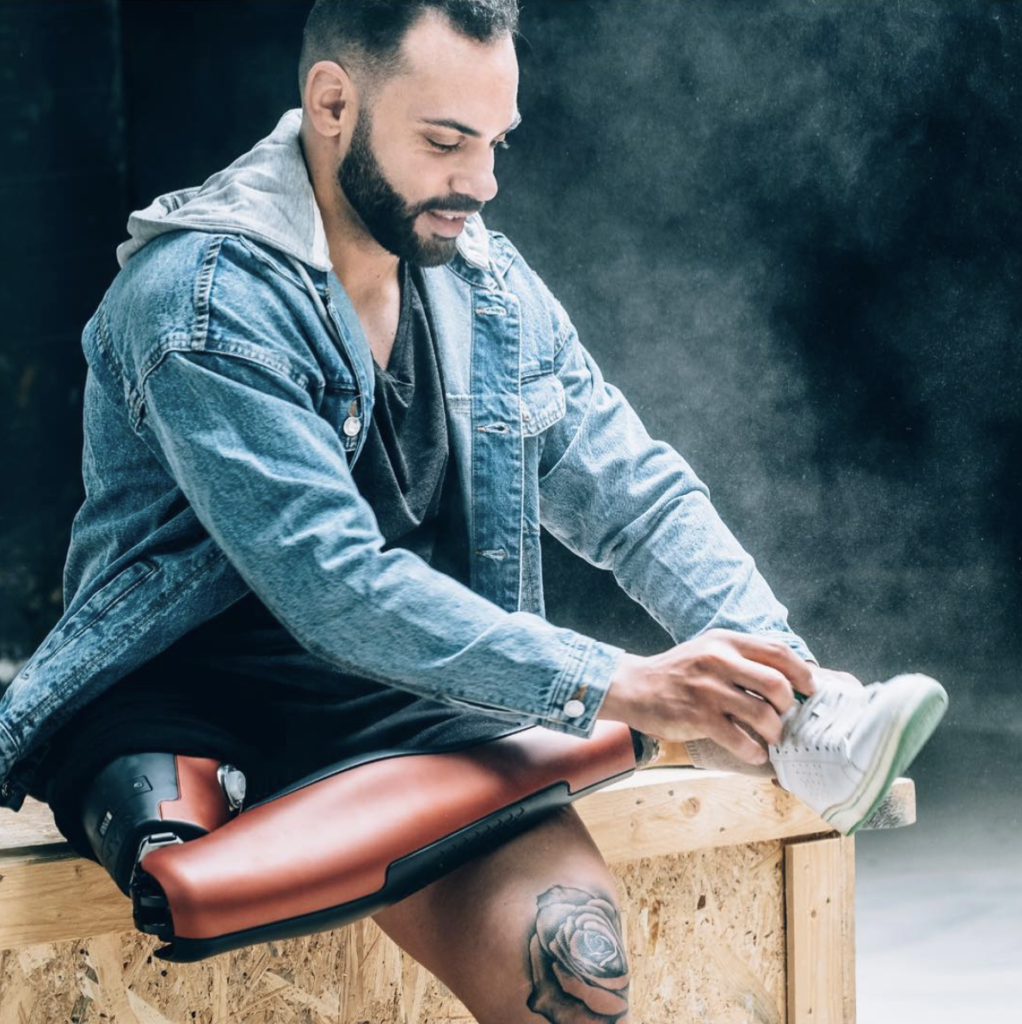UNYQ, a San Francisco-based company specializing in 3D printed medical wearables, has announced the launch of the UNYQ Socket, a 3D printed prosthetic leg socket. It is available for order now after being unveiled at the British Association of Prosthetics and Orthotists (BAPO) in Harrogate, UK on March 15th 2019.
The UNYQ Socket is one of various additional products that UNYQ plans to add to its Prosthetics Wear line, with the aim of eventually providing a complete, ‘aesthetically unified’ prosthetic leg product by the end of 2021.
Explaining the Prosthetics Wear line, Manuel Boza, Co-Founder and VP of Prosthetics at UNYQ, stated: “We are thrilled to announce the launch of the UNYQ Socket today. This is another step forward in being able to provide amputees with a total leg solution.”
“A solution where it’s practically one component, rather than a mish mash of different elements bolted together. We are working hard to further develop our Prosthetics Wear line, as well as the other exciting medical wearables in our pipeline, to continue to support our end users.”

Multi-sensored prosthetic leg socket
A prosthetic leg socket is the part of a prosthesis that attaches to the residual limb. The UNYQ Socket has been implemented with various features designed to provide benefits for both the amputee and the clinician that are not present in traditional prosthetic leg sockets. Using 3D printing, the socket is designed to be lightweight, replacing the metal material often found in a traditional prosthetic leg, whilst also improving on the style of existing options. Furthermore, the 3D printed prosthetic leg socket has also been integrated with sensors to record the user’s activity, such as number of steps and potential calories burned, allowing users to keep track of their fitness and exercise.
With these features, UNYQ hopes clinicians will benefit from improved patient satisfaction as they use the UNYQ Socket. The clinician will also have access to the data produced by the sensors, allowing them to monitor their patients. Additionally, the clinician will have the ability to replicate the 3D printed socket. This saves time for both them and the end user, with many amputees possessing more than one prosthetic leg, thus preventing the need for multiple visits.
UNYQ has also tested the medical device for ISO 10328, the standard for lower limb prosthetics, in order to ensure the quality and suitability of the product for clinical end use. The company expects to have the socket available at multiple clinics by the end of 2019.
The UNYQ Socket is designed to be used in conjunction with UNYQ’s line of personalised 3D printed prosthetic leg covers. These are cosmetic, protective covers for prosthetic leg devices, imbuing them with a style for “showing off [the user’s] personality as they see fit.” Both the 3D printed prosthetic leg cover and socket are part of the ‘total leg solution’ that UNYQ plans to provide for its customers.

3D printed medical wearables
UNYQ are not alone in realizing the benefits of using 3D printing to manufacture prosthetic and orthotic devices.
In August 2018, New York-based Northwell Health, a not for profit healthcare organization, announced a new study to manufacture and commercialize ‘The FIN’, a 3D printed prosthetic leg. Using Markforged/3HTI’s 3D printing technology with carbon fiber enhanced nylon, the prosthetic leg is waterproof, allowing amputees to move freely in and out of water without changing their prosthesis.
Syria Relief, a UK-based charity working in Syria, has pleaded to the UK’s Department for International Development (DFID) to provide funding for 3D prosthetics for children. The use of 3D printing will allow Syria Relief to save on the time and money it takes to provide traditional prosthetics for Syria.
Finally, outside of 3D printed prosthetics, Colorado-based ActivArmor uses 3D printing to manufacture casts and splints with waterproof and customizable properties that are lacking in traditional orthoses.

You can now cast your vote for the third annual 3D Printing Industry Awards. Help decide this year’s winners now.
Subscribe to the 3D Printing Industry newsletter for the latest news in additive manufacturing. You can also keep connected by following us on Twitter and liking us on Facebook.
Looking for a career in additive manufacturing? Visit 3D Printing Jobs for a selection of roles in the industry.
Featured image shows model wearing UNYQ’s 3D printed prosthetic line. Photo via UNYQ.


